Synergistic Effect of Marble Powder and Green Sand on the Mechanical Properties of Metakaolin-Cement Concrete
Abstract
:1. Introduction
2. Materials and Methodology
3. Results and Discussion
3.1. Workability-Slump
3.2. Compressive Strength
3.3. Flexural Strength
3.4. Split Tensile Strength
3.5. Impact Strength
3.6. Water Absorption and Porosity
3.7. X-Ray Diffractometer
3.8. SEM
3.9. Regression Analysis
4. Conclusions
- The workability of the concrete was very much influenced due to the addition of green sand and marble powder. The relative decrease in the workability was achieved due to the increase in amount of water required by the aggregates and the normal sand. Moreover decrease in the workability may also be caused due agglomeration and compounding effect exhibited by the metakaolin particles.
- An increase in the compressive strength of all the mixes occurred at various ages. The filler effect and the pozzolanic reaction of metakaolin with calcium hydrate also contributed to the increase in the strength of the concrete. This enables the use of marble and green sand as construction materials by minimizing the utilization of the river sand as fine aggregate and the reduced production of cement by replacing with metakaolin.
- The flexural strength of the concrete mixes was enhanced due to the fine aggregate replacement and metakaolin replacement. The use of marble powder and green sand within 15% was found to be optimum to increase the flexural strength of the concrete when used in combination with metakaolin as cement substitute.
- The splitting tensile of the concrete was also improved up to 15% beyond which the decrease in the reduction in the split tensile strength was observed. This shows that using 15% green sand and marble powder was found to be adequate as far as the strength parameters are concerned.
- The impact strength of the concrete was much enhanced for the concrete containing metakaolin as cement replacement and marble powder and green sand as fine aggregate replacement that proved to be efficient in absorbing the impact energy acting on the concrete.
- The use of marble powder and green sand as fine aggregate replacement created a favorable effect on reducing the porosity of the concrete. The reduction in the water absorption caused a decrease in the voids and is responsible for the improvement in the mechanical strength and impermeability properties of concrete. The addition of metakaolin caused stronger bonding of the cement paste and strengthens the adherence of the cement and the aggregates by the formation of CSH gel which is also responsible for the reduction in the porosity values.
- The X-ray diffraction studies also showed the minimal presence of calcium hydroxide that confirmed the consumption of calcium hydroxide in the hydration reaction which is responsible for the dense microstructure of the concrete by the addition of CSH gel. The reduced calcium hydroxide peaks inherits the formation of CSH gel that is responsible for the improved strength and durability of the concrete.
- The SEM images of the concrete also showed reduction in the voids in the concrete and the well distributed CSH gel that effectively bonded the fine aggregates with the cement matrix. The SEM micrographs are coherent for the obtained mechanical properties and the morphology of concrete mix and shows that the marble powder and green sand in combination with metakaolin can be used for making good quality concrete with higher strength.
- The prediction models obtained from the experimental data showed the relationship between various strength parameters of the concrete and the obtained R2 values indicate the conformity of the interrelationship between the variables.
Author Contributions
Funding
Conflicts of Interest
References
- Siddique, R.; de Schutter, G.; Noumowe, A. Effect of used-foundry sand on the mechanical properties of concrete. Constr. Build. Mater. 2009, 23, 976–980. [Google Scholar] [CrossRef]
- Ganesh, P.G.; Hyun, J.H.; Kim, Y.Y. Effects of foundry sand as fine aggregate in concrete production. Constr. Build. Mater. 2014, 70, 514–521. [Google Scholar] [CrossRef]
- Agarwal, Y.; Siddique, R. Microstructure and properties of concrete using bottom ash and waste foundry sand as partial replacement of fine aggregates. Constr. Build. Mater. 2014, 54, 210–223. [Google Scholar] [CrossRef] [Green Version]
- MerveBasar, H.; Aksoy, N.D. The effect of waste foundry sand as partial replacement of sand on the mechanical, leaching and micro-structural characteristics of ready-mixed concrete. Constr. Build. Mater. 2012, 35, 508–515. [Google Scholar]
- Siddique, R.; Singh, G. Effect of foundry sand as partial replacement of sand on the strength, Ultrasonic pulse velocity and permeability of concrete. Constr. Build. Mater. 2012, 26, 416–422. [Google Scholar]
- Siddique, R.; Aggarwal, Y.; Aggarwal, P.; Kadri, E.-H.; Bennacer, R. Strength, Durability and micro-structural properties of concrete made with used-foundry sand. Constr. Build. Mater. 2011, 25, 1916–1925. [Google Scholar] [CrossRef]
- Guney, Y.; Sari, Y.D.; Yalcin, M.; Tuncan, A.; Donmez, S. Re-usage of waste foundry sand in High-Strength concrete. Waste Manag. 2010, 30, 1705–1713. [Google Scholar] [CrossRef] [PubMed]
- Antoni, M.; Rossen, J.; Martirena, F.; Scrivener, K. Cement Substitution by a combination of metakaolin and limestone. Cem. Concr. Res. 2012, 42, 1579–1589. [Google Scholar] [CrossRef]
- Kim, H.; Lee, S.; Moon, H. Strength properties and durability aspects of high strength concrete using Korean metakaolin. Constr. Build. Mater. 2007, 21, 1229–1237. [Google Scholar] [CrossRef]
- Sabir, B.B.; Wild, S.; Bai, J. Metakaolin and calcined clays as pozzolans for concrete: A review. Cem. Concr. Compos. 2001, 23, 441–454. [Google Scholar] [CrossRef]
- Barbhuiya, S.; Chow, P.; Memon, S. Microstructure, hydration and nanomechanical properties of concrete containing metakaolin. Constr. Build. Mater. 2015, 95, 696–702. [Google Scholar] [CrossRef]
- Cheng, S.; Shui, Z.; Li, Q.; Sun, T.; Yang, R. Properties, microstructure and hydration products of light weight aggregate concrete with metakaolin and slag addition. Constr. Build. Mater. 2016, 127, 59–67. [Google Scholar] [CrossRef]
- Bernal, S.A.; de Gutiérrez, R.M.; Provis, J.L. Engineering and durability properties of concretes based on alkali activated granulated blast furnace slag/metakaolin blends. Constr. Build. Mater. 2012, 33, 99–108. [Google Scholar] [CrossRef]
- Alyamae, K.E.; Aydin, A.B. Concrete Properties containing Fine aggregate marble powder. KSCE J. Civ. Eng. Struct. Eng. 2015, 19, 2208–2216. [Google Scholar] [CrossRef]
- Gameiro, F.; De Brito, J.; Correia da Silva, D. Durability Performance of structural concrete containing fine aggregates from waste generated by marble quarrying industry. Eng. Struct. 2014, 59, 654–662. [Google Scholar] [CrossRef]
- Aliabdo, A.A.; AbdElamoty, M.; Auda, E.M. Re-use of marble dust in the production of cement and concrete. Constr. Build. Mater. 2014, 50, 28–41. [Google Scholar] [CrossRef]
- Corinaldesi, V.; Moriconi, G.; Naik, T.R. Characterization of marble powder for its use in mortar and concrete. Constr. Build. Mater. 2010, 24, 113–117. [Google Scholar] [CrossRef]
- Hebhoub, H.; Aoun, H.; Belachia, M.; Houari, H.; Ghorble, E. Use of waste marble aggregates in concrete. Constr. Build. Mater. 2011, 25, 1167–1171. [Google Scholar] [CrossRef]
- Talah, A.; Kharchi, F.; Chaid, R. Influence of marble powder on HPC. Procedia Eng. 2015, 114, 685–690. [Google Scholar] [CrossRef]
- Hari Hara Sudan, A.S.; Neelamegam, M. Experimental study on strength behaviour of concrete using foundry sand as fine aggregate. Int. Res. J. Eng. Technol. 2017, 4, 2848–2852. [Google Scholar]
- Ganesh, P.G.; Hyun, J.H.; Kim, Y.Y; Bang, J.W; Lee, B.J. Mechanical and Durability Properties of Concrete Made with Used Foundry Sand as Fine Aggregate. Adv. Mater. Sci. Eng. 2015, 161753, 1–11. [Google Scholar] [CrossRef]
- Ordinary Portland Cement 43 Grade – Specification, BIS 8112-1989; Bureau of Indian Standards: New Delhi, India, 1989.
- Specifications for Coarse and Fine Aggregates from Natural Sources for Concrete, BIS 383-1970; Bureau of Indian Standards: New Delhi, India, 1970.
- Concrete Mix proportioning – Guidelines, BIS 10262-2009; Bureau of Indian Standards: New Delhi, India, 2009.
- Methods of Tests on Strength of Concrete, BIS 516-1959; Bureau of Indian Standards: New Delhi, India, 1959.
- Standard Test Method for Density, Absorption and Voids in Hardened Concrete, ASTM C642-2006; American Society for Testing and Materials: West Conshohocken, PA, USA, 2006.
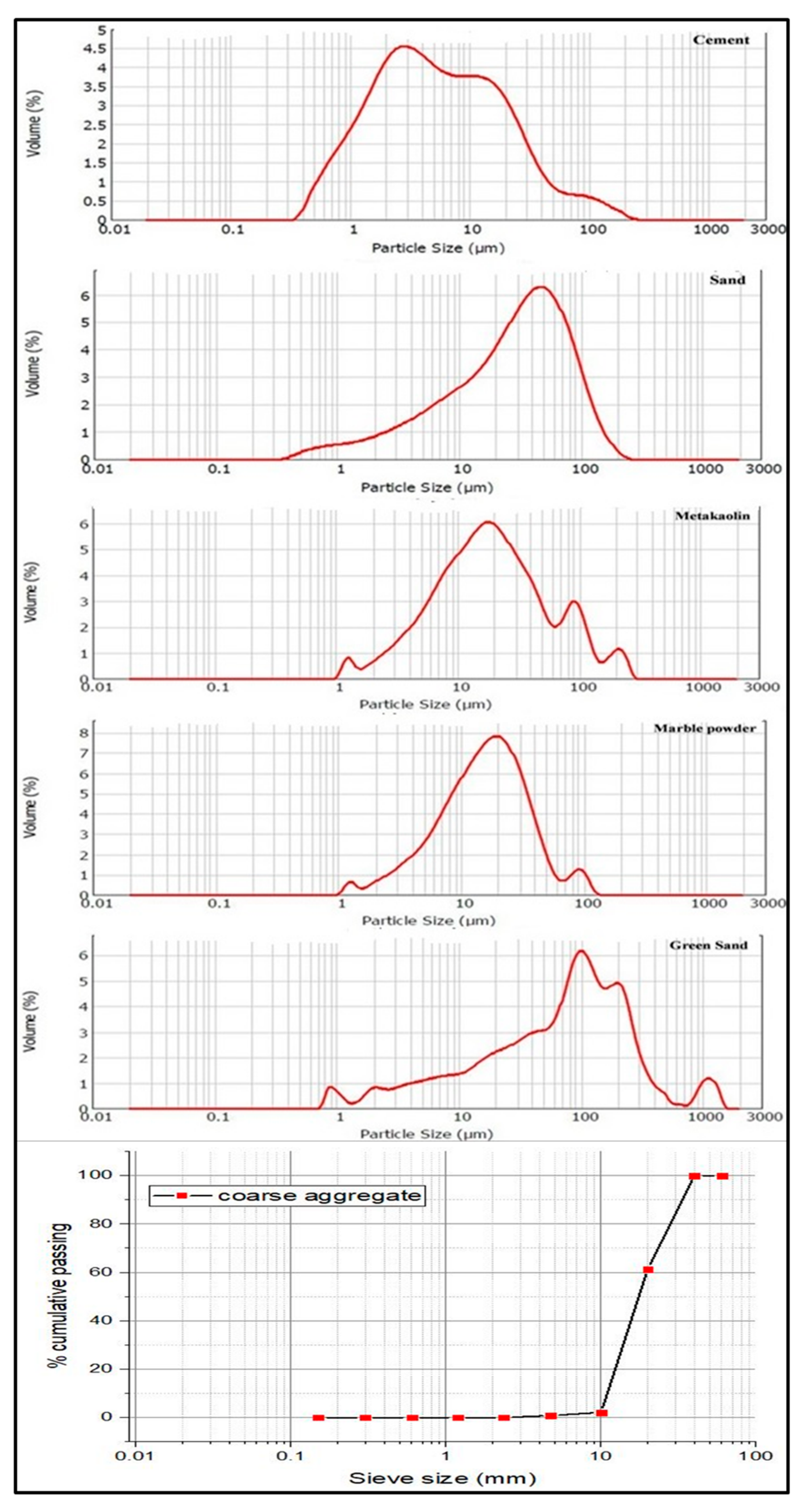

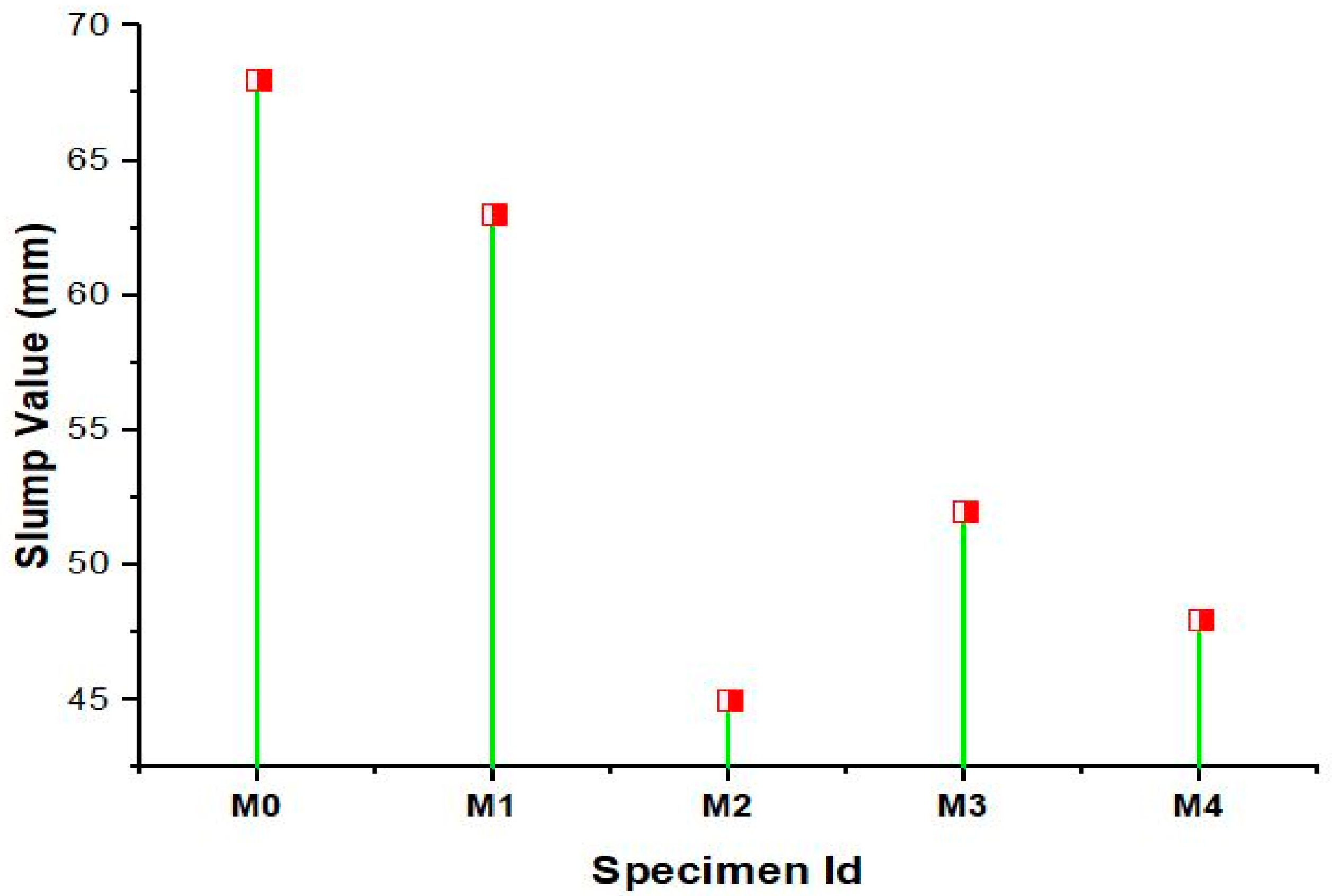
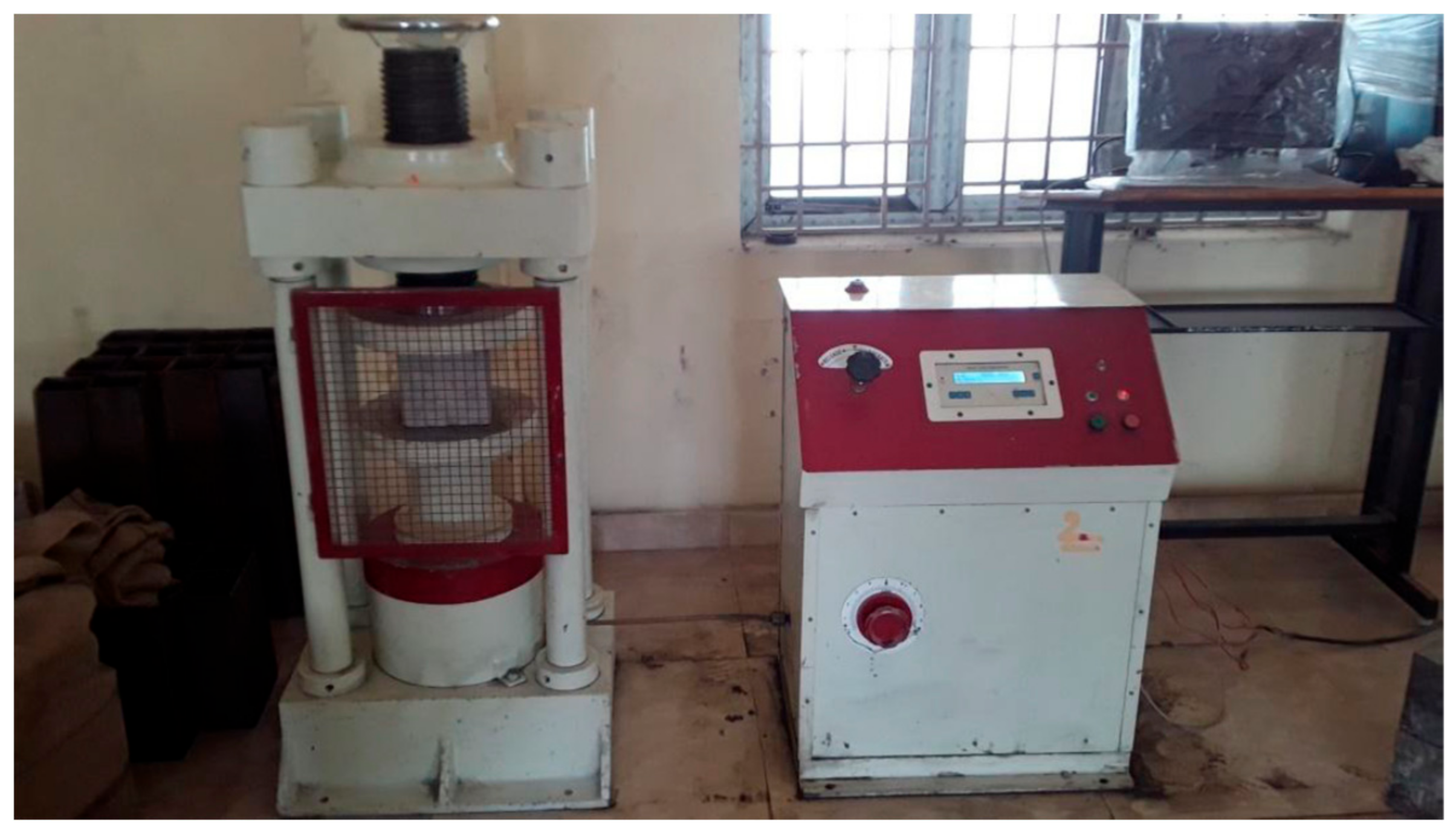
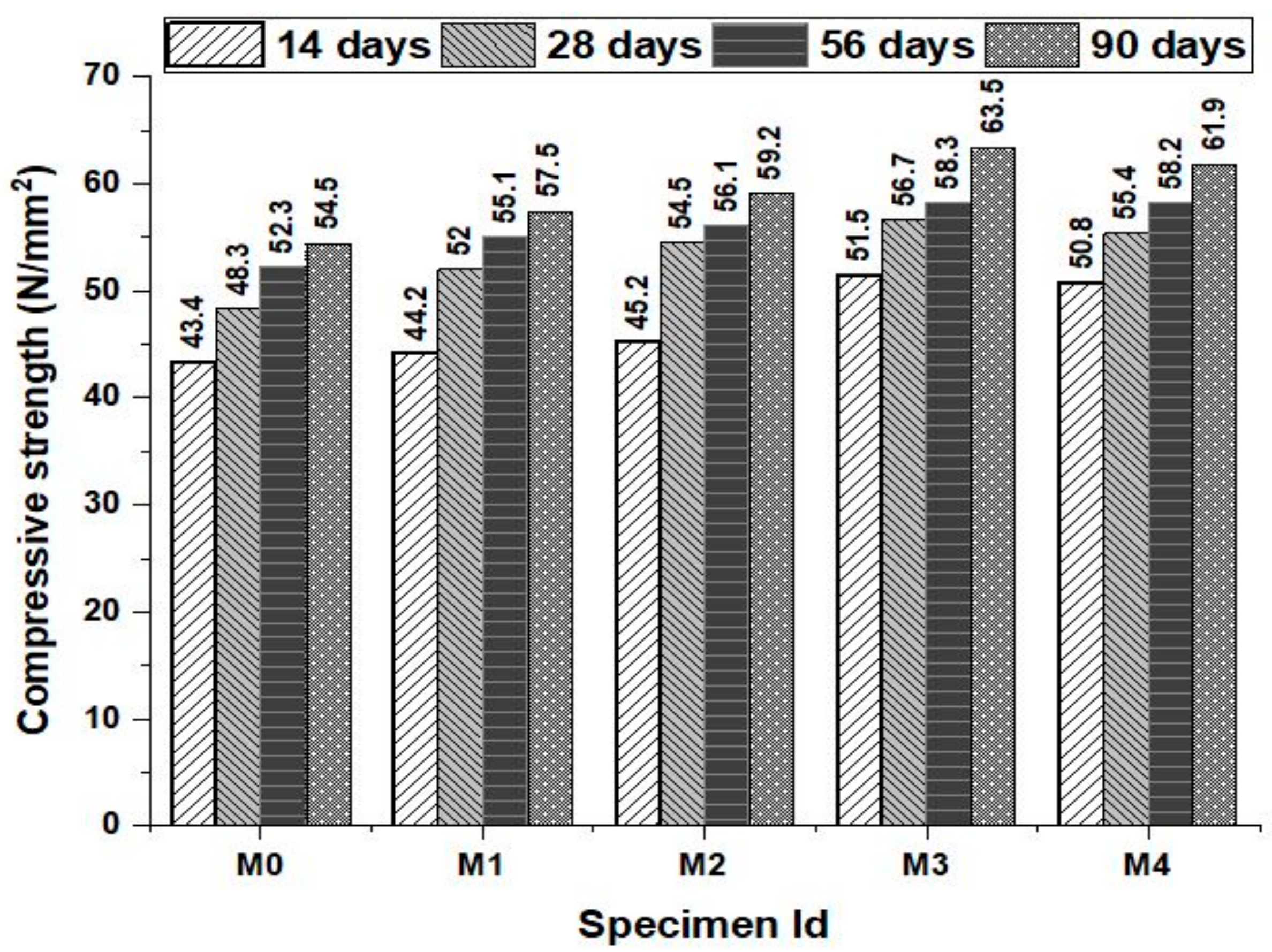
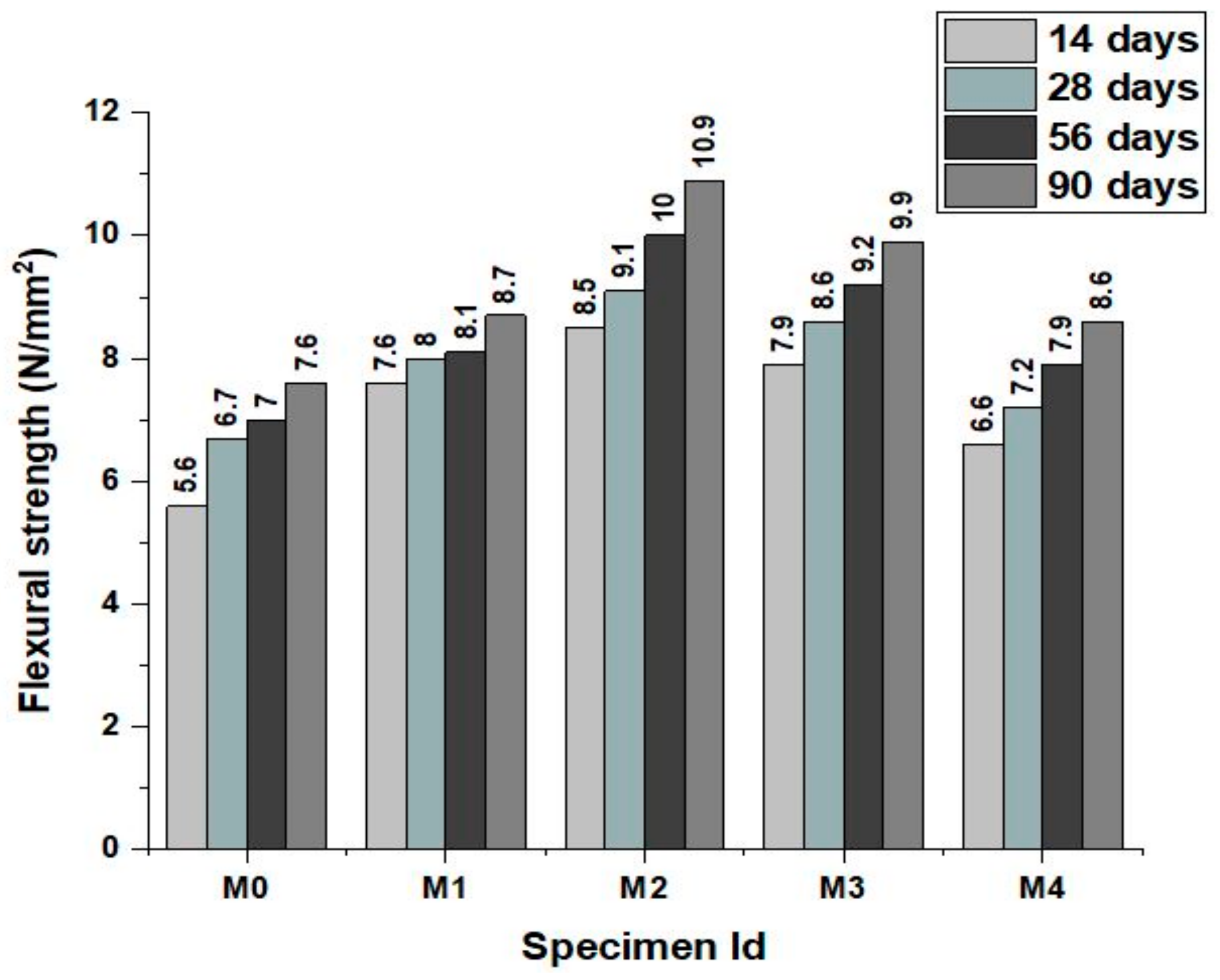
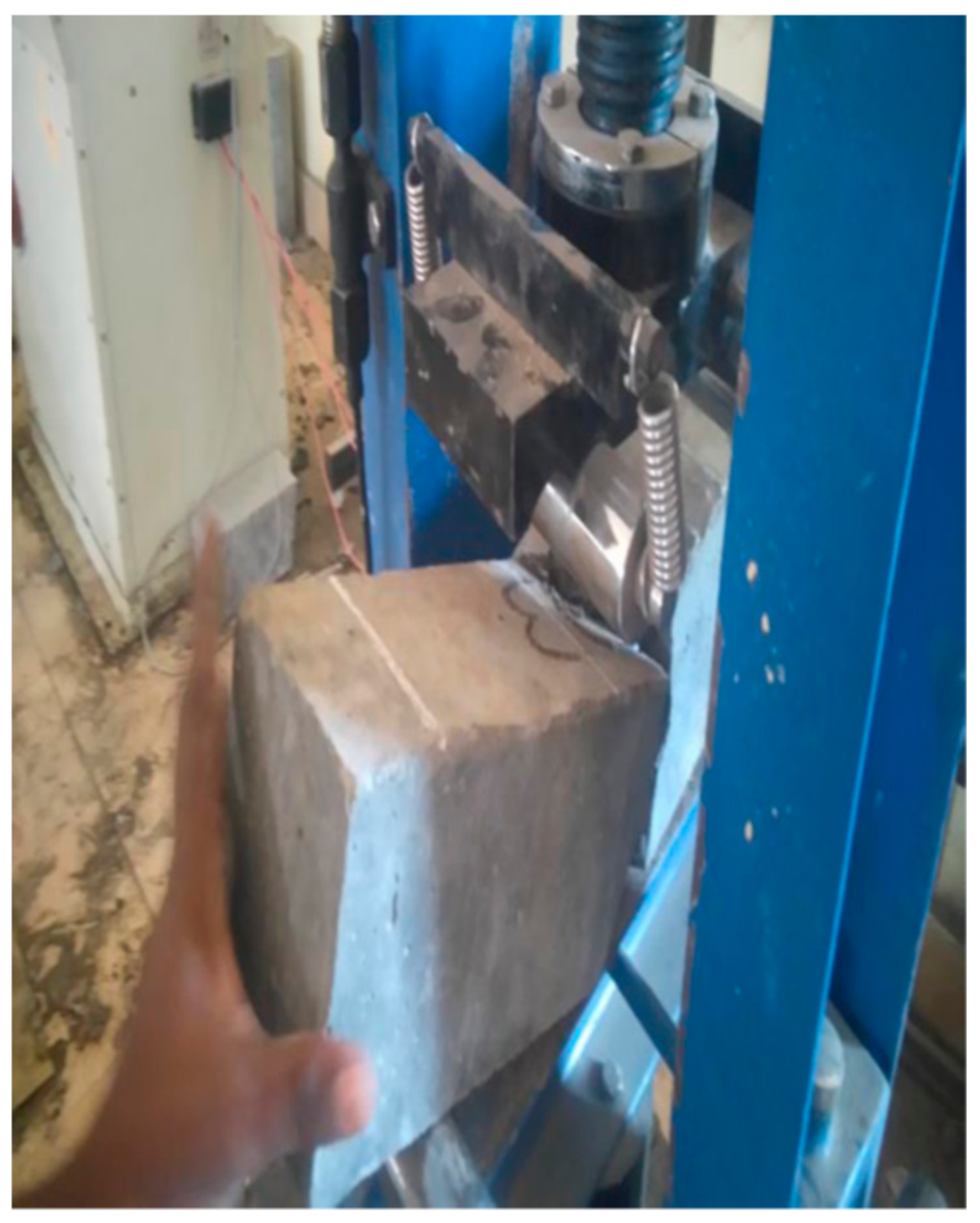
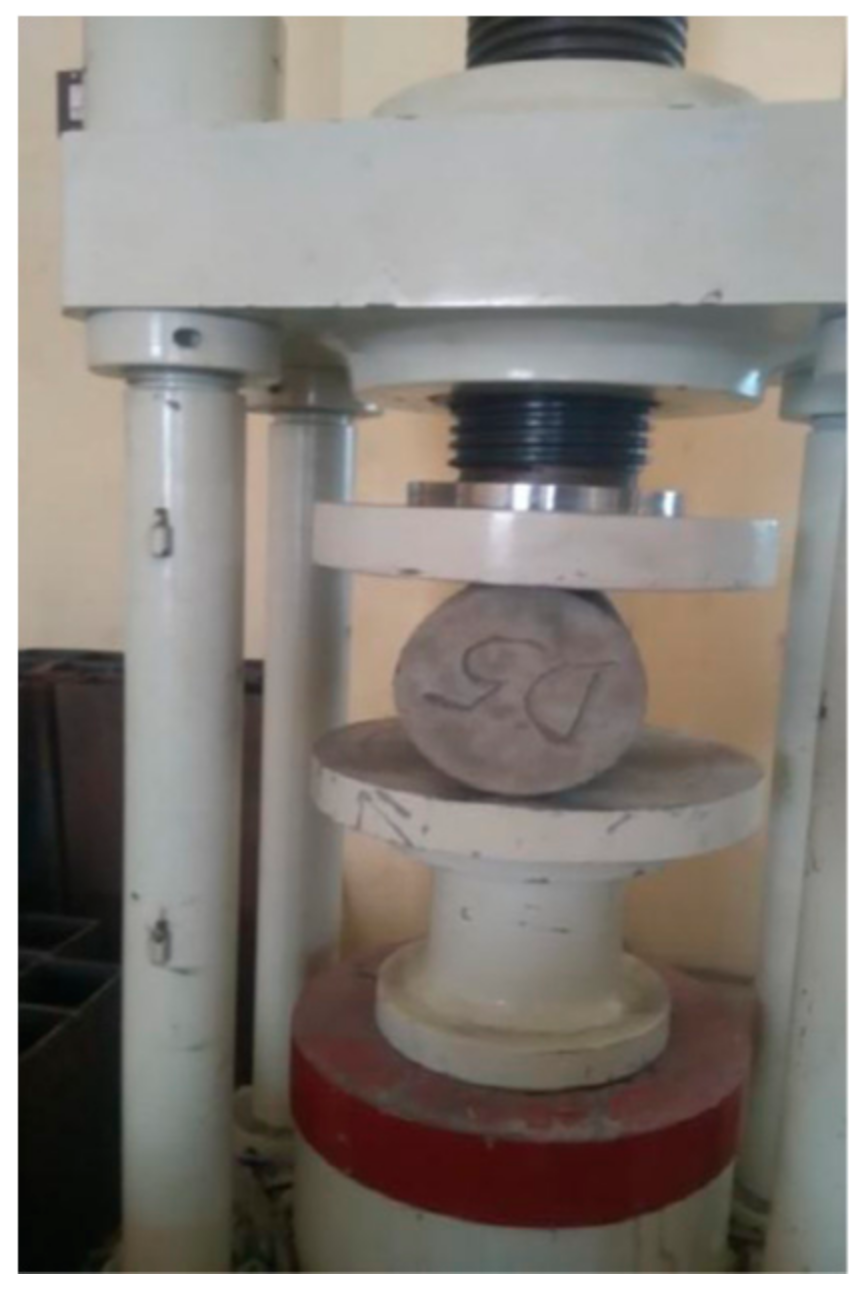
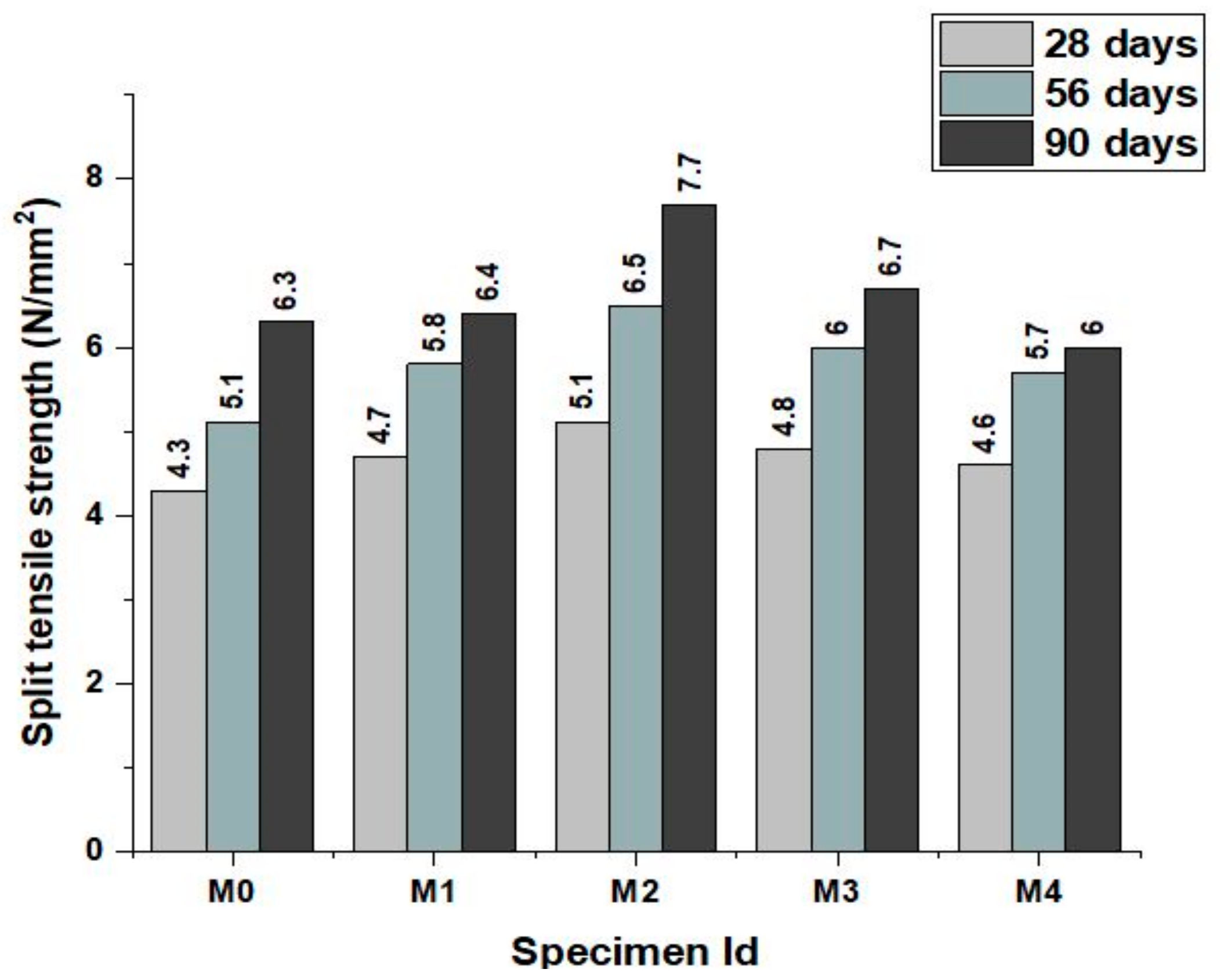
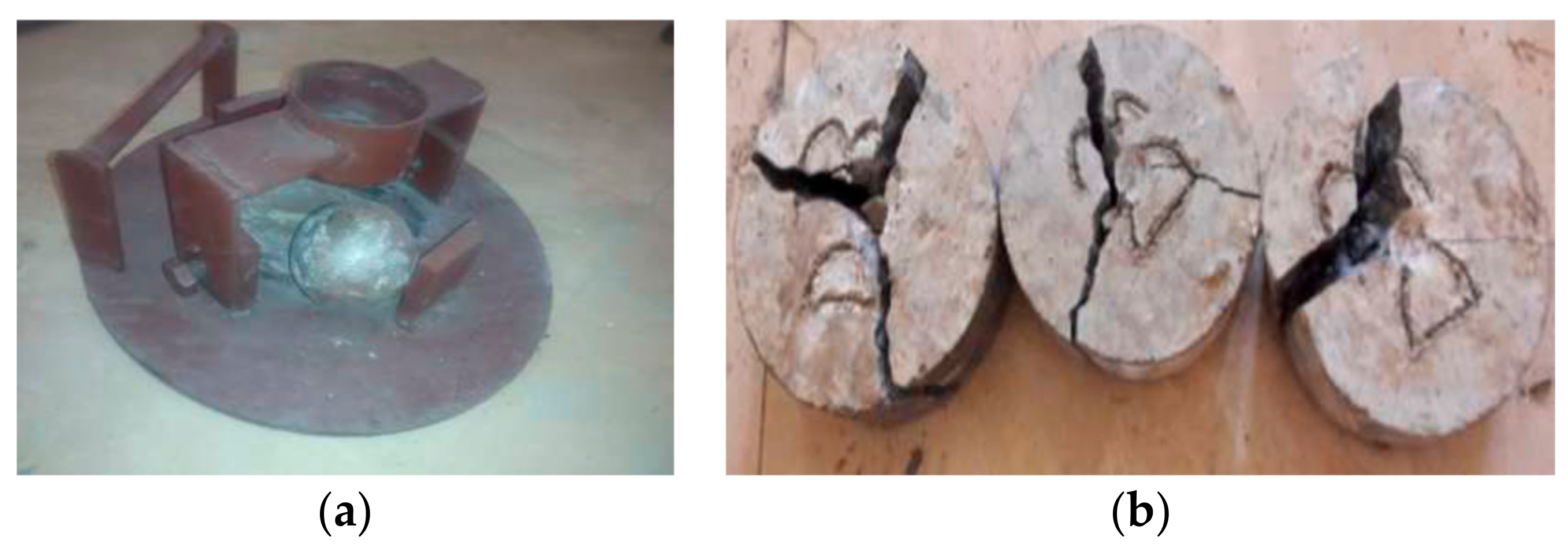

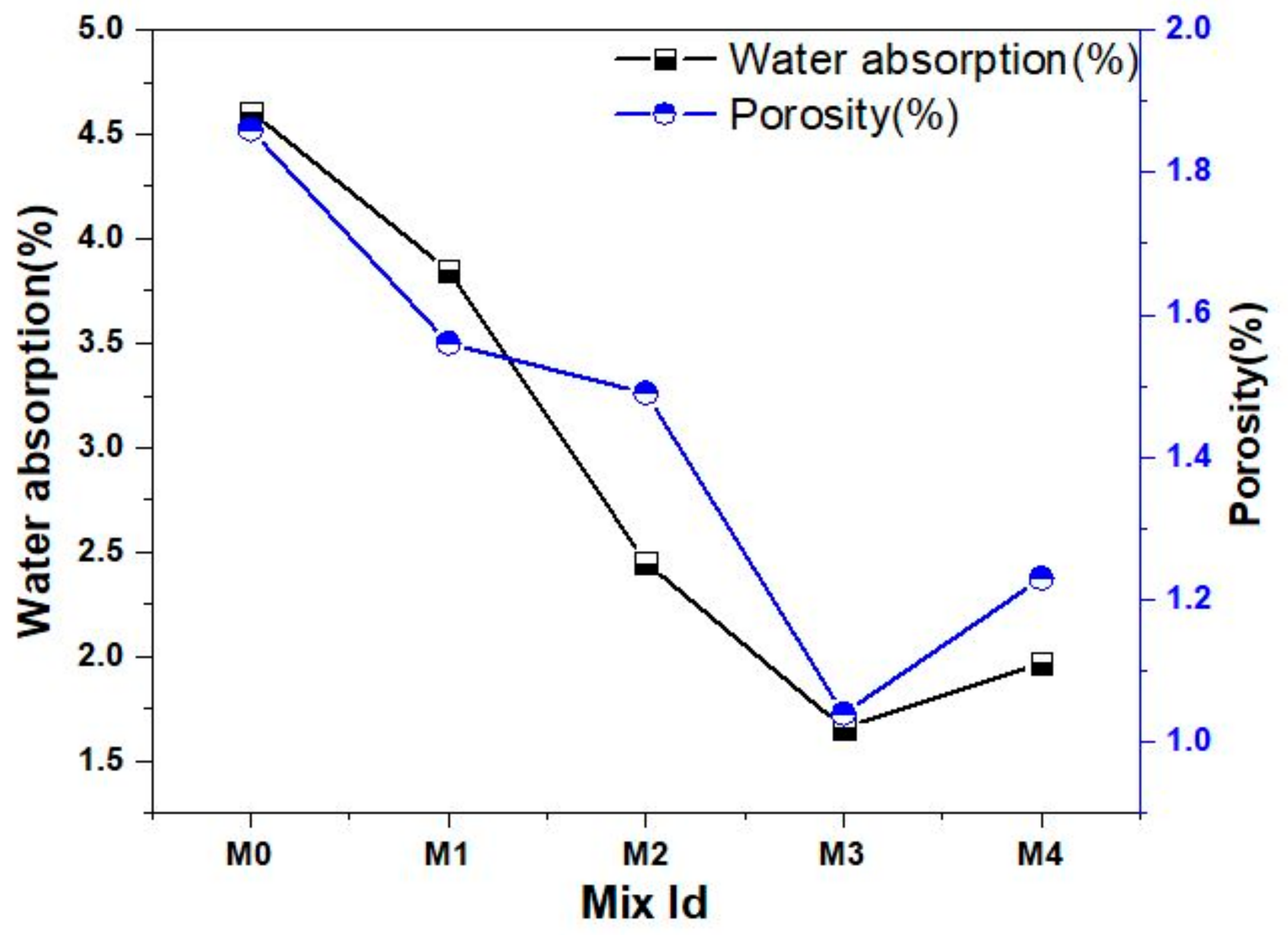
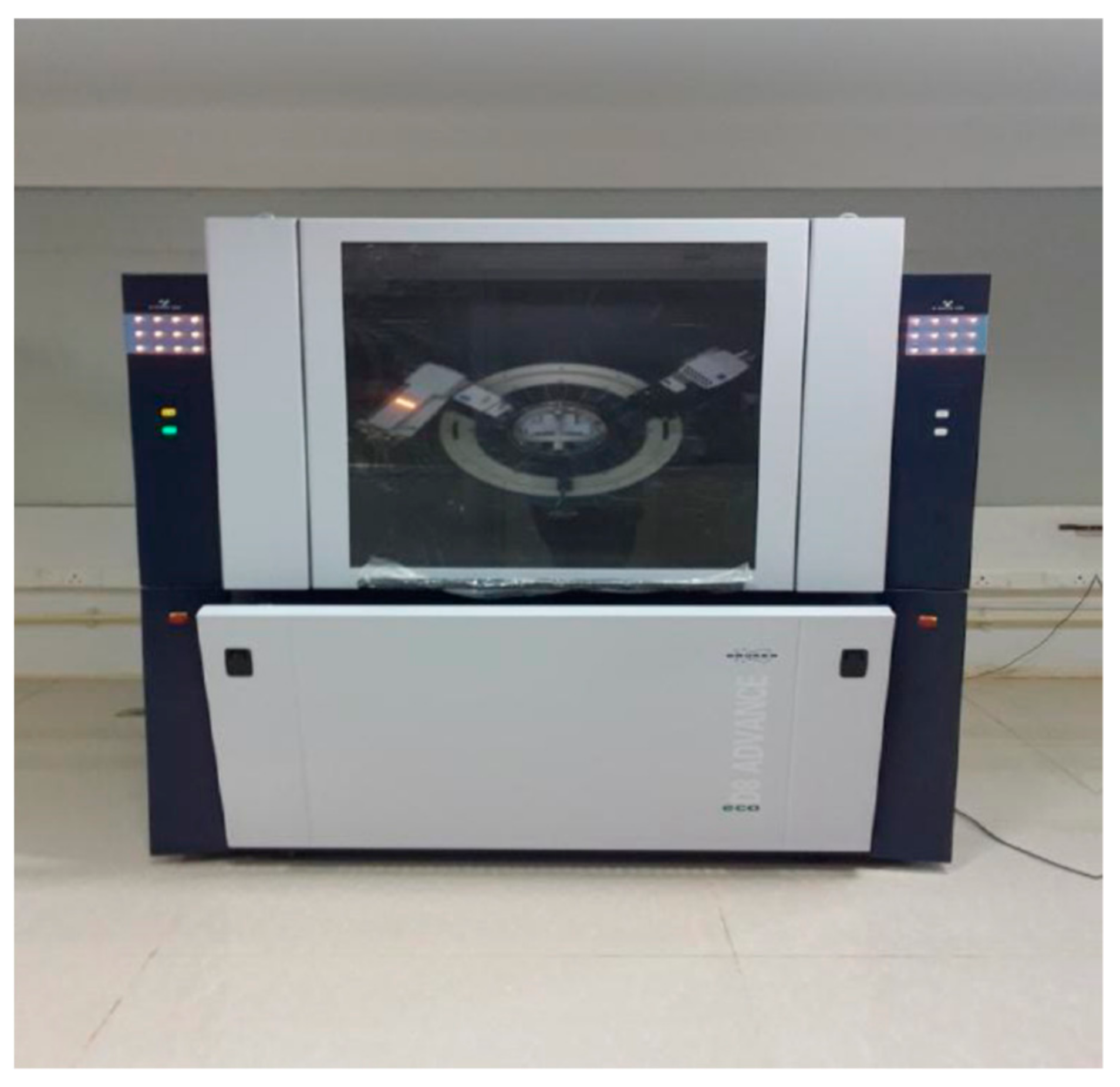

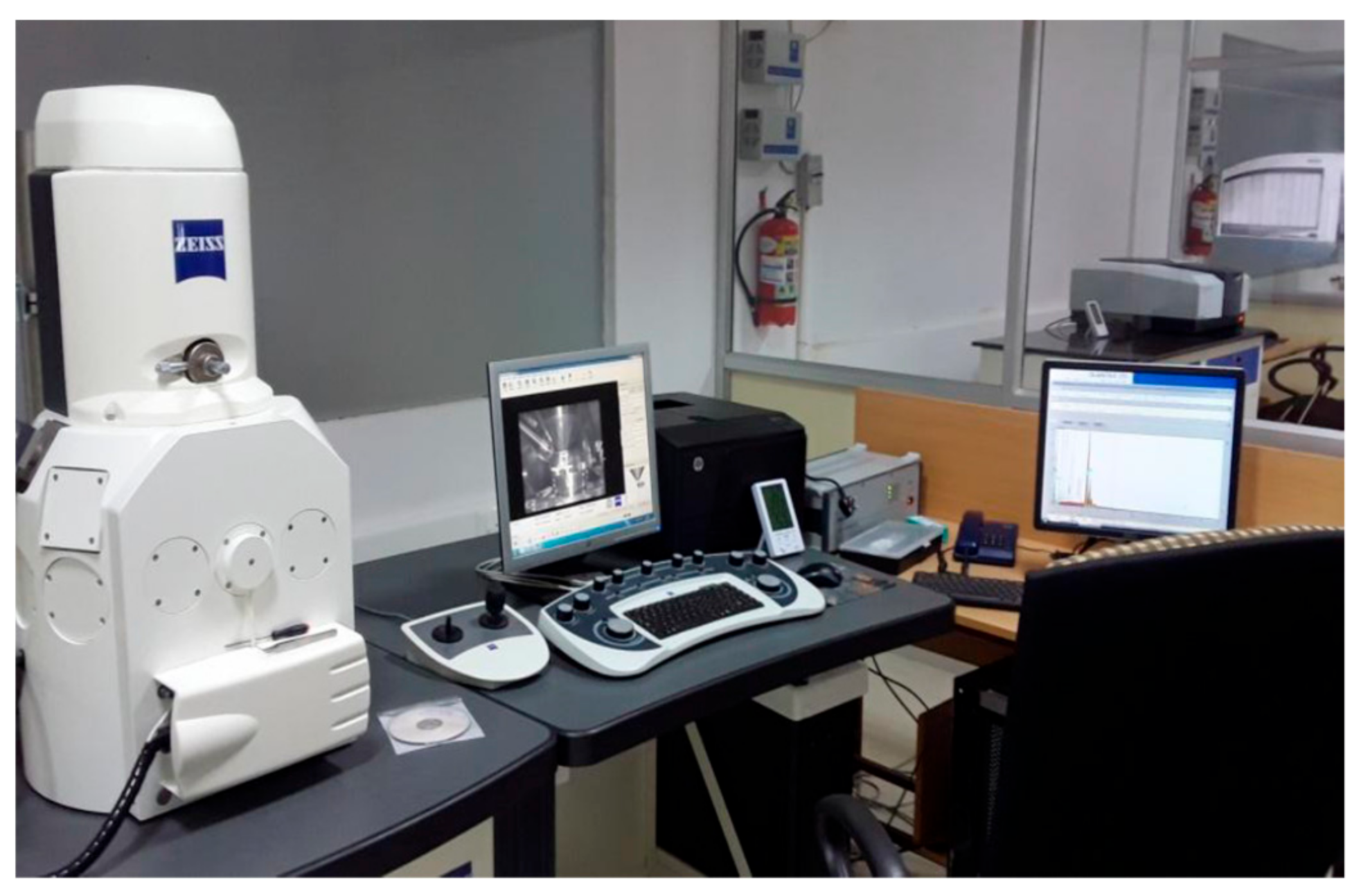



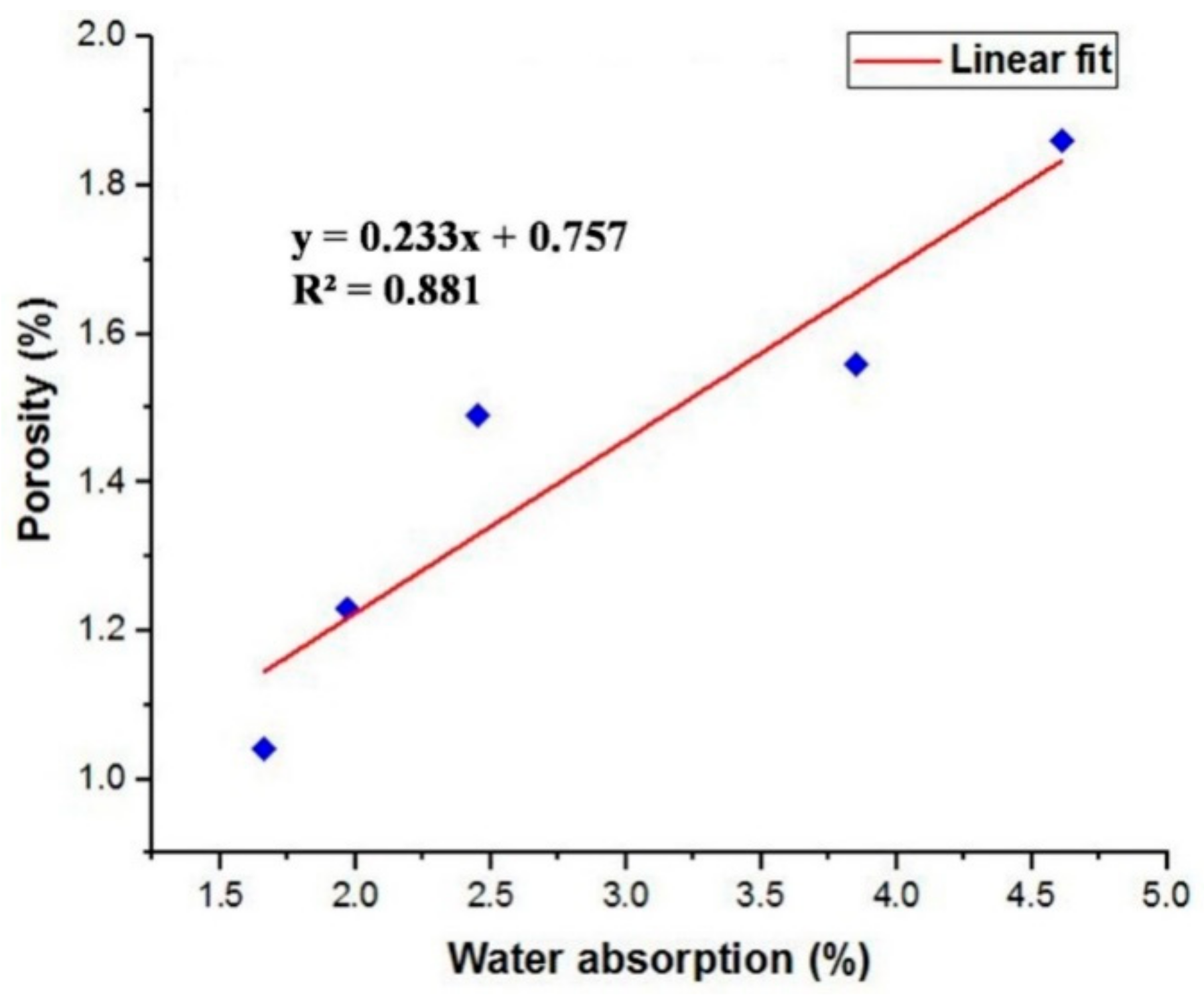
| Component | OPC (%) | MP (%) | GS (%) | MK (%) |
|---|---|---|---|---|
| SiO2 | 20.85 | 0.79 | 87.91 | 53.75 |
| Al2O3 | 4.78 | 0.21 | 4.70 | 43.82 |
| Fe2O3 | 3.51 | 0.06 | 0.94 | 0.45 |
| CaO | 63.06 | 55.42 | 0.14 | 0.16 |
| MgO | 2.32 | 0.25 | 0.30 | 0.00 |
| SO3 | 2.48 | 0.24 | 0.09 | 0.02 |
| K2O | 0.55 | 0.02 | 0.25 | 0.18 |
| Na2O | 0.24 | 0.10 | 0.19 | 0.26 |
| TiO2 | 0.25 | 0.00 | 0.15 | 0.86 |
| Mn2O3 | 0.05 | 0.00 | 0.02 | 0.00 |
| Cl | 0.01 | 0.07 | 0.00 | 0.00 |
| Mix ID | Binder | Fine Aggregate | Coarse Aggregate | |||
|---|---|---|---|---|---|---|
| Cement | Metakaolin | Sand | Green Sand | Marble Powder | ||
| M0 | 100% | 0% | 100% | 0% | 0% | 100% |
| M1 | 95% | 5% | 90% | 5% | 5% | 100% |
| M2 | 95% | 5% | 80% | 10% | 10% | 100% |
| M3 | 95% | 5% | 70% | 15% | 15% | 100% |
| M4 | 95% | 5% | 60% | 20% | 20% | 100% |
© 2019 by the authors. Licensee MDPI, Basel, Switzerland. This article is an open access article distributed under the terms and conditions of the Creative Commons Attribution (CC BY) license (http://creativecommons.org/licenses/by/4.0/).
Share and Cite
Natarajan, S.; Murugesan, P. Synergistic Effect of Marble Powder and Green Sand on the Mechanical Properties of Metakaolin-Cement Concrete. Materials 2019, 12, 476. https://doi.org/10.3390/ma12030476
Natarajan S, Murugesan P. Synergistic Effect of Marble Powder and Green Sand on the Mechanical Properties of Metakaolin-Cement Concrete. Materials. 2019; 12(3):476. https://doi.org/10.3390/ma12030476
Chicago/Turabian StyleNatarajan, Sakthieswaran, and Priyanka Murugesan. 2019. "Synergistic Effect of Marble Powder and Green Sand on the Mechanical Properties of Metakaolin-Cement Concrete" Materials 12, no. 3: 476. https://doi.org/10.3390/ma12030476





